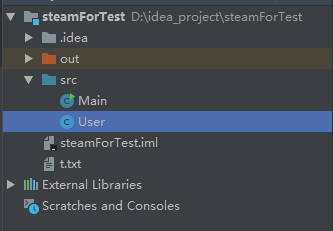Java对象流的基本概念:

实例代码:
实体类User:
1 import java.io.Serializable; 2 3 /** 4 * @author zsh 5 * @company wlgzs 6 * @create 2019-01-25 15:11 7 * @Describe 8 */ 9 public class User implements Serializable { 10 11 private Integer id; 12 13 private String name; 14 15 public User(Integer id, String name) { 16 this.id = id; 17 this.name = name; 18 } 19 20 @Override 21 public String toString() { 22 return "User{" + 23 "id=" + id + 24 ", name='" + name + '\'' + 25 '}'; 26 } 27 }
Main类:
1 import java.io.*; 2 import java.util.ArrayList; 3 4 public class Main { 5 6 public static void main(String[] args) throws IOException, ClassNotFoundException { 7 //1.定义1个存储user的ArrayList集合 8 ArrayList<User> list = new ArrayList<>(); 9 10 //2.往ArrayList集合中存储User对象 11 list.add(new User(1,"张三")); 12 list.add(new User(2,"李四")); 13 list.add(new User(3,"王五")); 14 15 //3.创建一个序列化流ObjectOutputSteam对象 16 ObjectOutputStream oos = new ObjectOutputStream(new FileOutputStream("t.txt")); 17 18 //4.使用ObjectOutputSteam对象的方法writeObject,对集合进行序列化 19 oos.writeObject(list); 20 21 //5.创建一个反序列化流ObjectInputSteam对象 22 ObjectInputStream ois = new ObjectInputStream(new FileInputStream("t.txt")); 23 24 //6.使用ObjectInputStream对象的方法readObject,读取文件中保存的集合 25 Object o = ois.readObject(); 26 27 //7.把Object类型的集合转换为ArrayList类型 28 ArrayList<User> list2 = (ArrayList<User>) o; 29 30 //8.遍历ArrayList集合 31 for (User user : list2) { 32 System.out.println(user); 33 } 34 35 //9.释放资源 36 oos.close(); 37 ois.close(); 38 39 } 40 }
项目结构目录:
